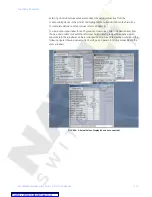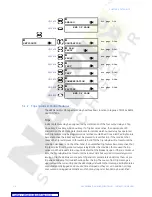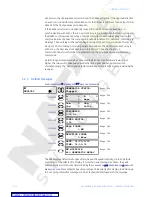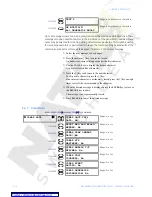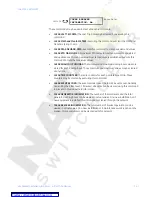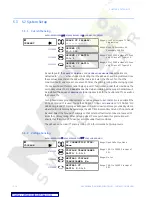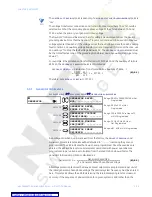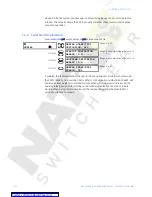
5–6
489 GENERATOR MANAGEMENT RELAY – INSTRUCTION MANUAL
CHAPTER 5: SETPOINTS
5.1.2
Trips / Alarms/ Control Features
The 489 Generator Management Relay has three basic function categories: TRIPS, ALARMS,
and CONTROL.
Trips
A 489 trip feature may be assigned to any combination of the four output relays: 1 Trip,
2 Auxiliary, 3 Auxiliary, and 4 Auxiliary. If a Trip becomes active, the appropriate LED
(indicator) on the 489 faceplate illuminates to indicate which output relay has operated.
Each trip feature may be programmed as
latched
or
unlatched
. Once a latched trip feature
becomes active, the
RESET
key must be pressed to reset that trip. If the condition that
caused the trip is still present (for example, hot RTD) the trip relay(s) will not reset until the
condition disappears. On the other hand, if an unlatched trip feature becomes active, that
trip resets itself (and associated output relay(s)) after the condition that caused the trip
ceases and the Breaker Status input indicates that the breaker is open. If there is a lockout
time, the trip relay(s) will not reset until the lockout time has expired. Immediately prior to
issuing a trip, the 489 takes a snapshot of generator parameters and stores them as pre-
trip values, allowing for troubleshooting after the trip. The cause of last trip message is
updated with the current trip and the 489 display defaults to that message. All trip features
are automatically logged and date and time stamped as they occur. In addition, all trips
are counted and logged as statistics such that any long term trends may be identified.
MESSAGE
ANALOG
[
Z
]
MESSAGE
END OF PAGE
SETPOINTS
[
Z
]
SIMULATION
[
Z
]
MESSAGE
PRE-
FAULT
[
Z
]
MESSAGE
FAULT
[
Z
]
MESSAGE
TEST
[
Z
]
MESSAGE
TEST
[
Z
]
MESSAGE
COMMUNICATION
[
Z
]
MESSAGE
FACTORY
[
Z
]
MESSAGE
END OF PAGE




